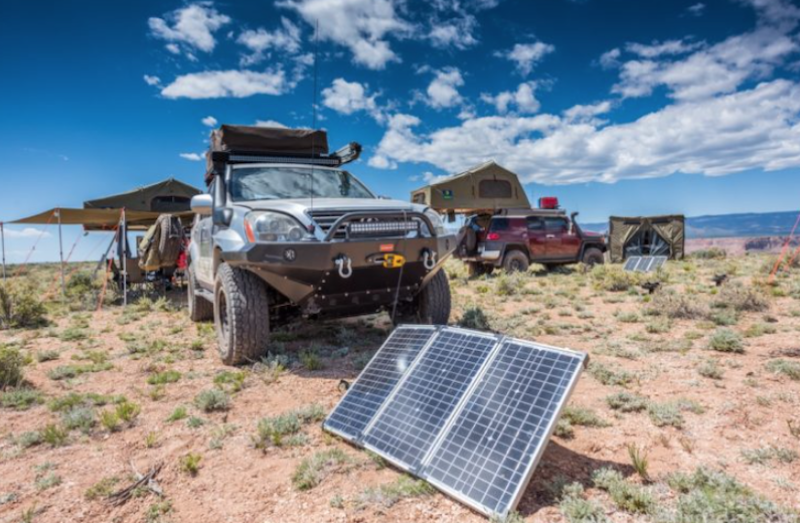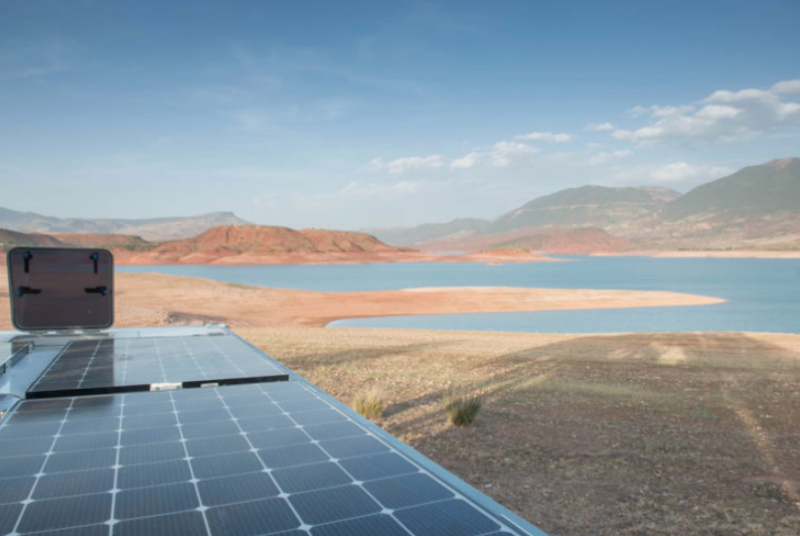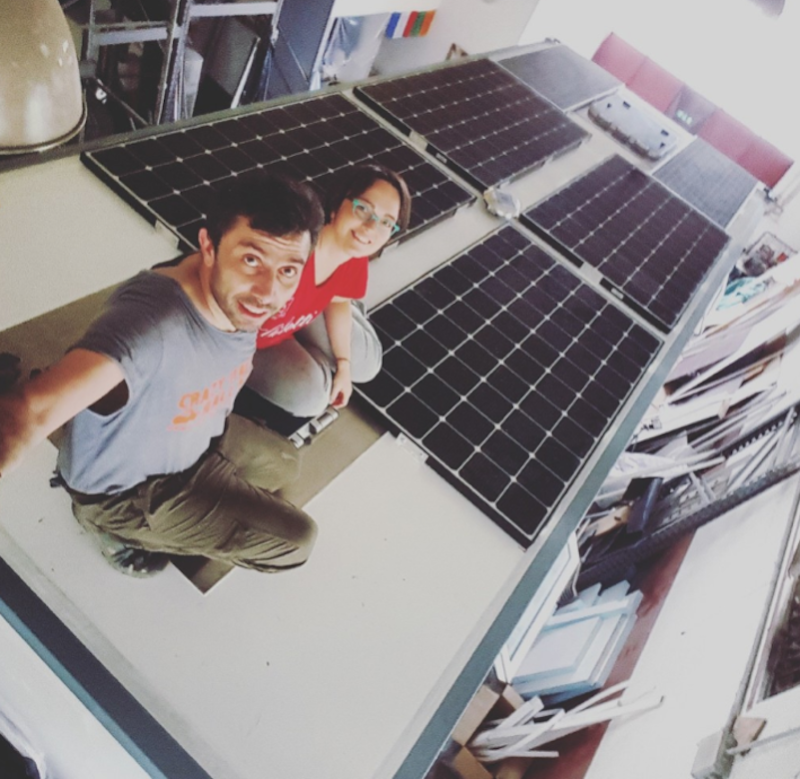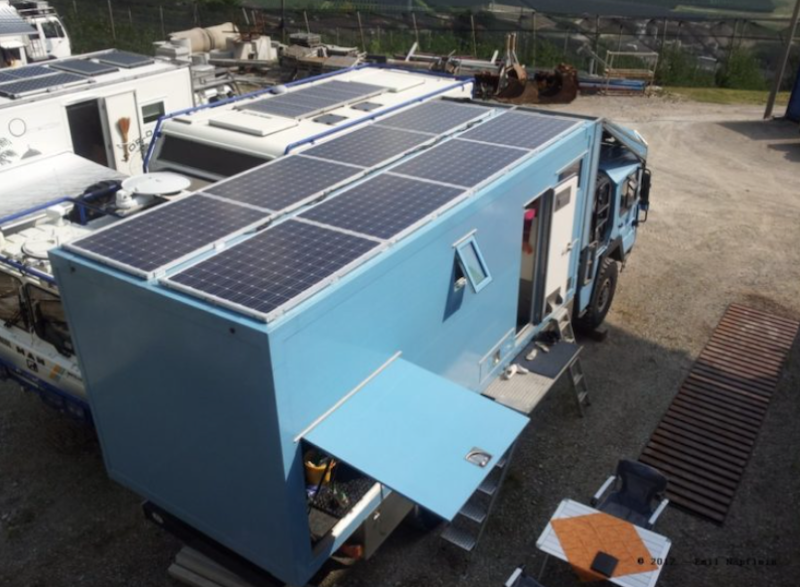
Best MPPT or PWM solar controller for the camper
PWM and MPPT charge controllers are both devices widely used to charge batteries using energy produced by solar panels on campers and boats and, of course, in fixed installations.
The PWM controller is a switch connecting the solar panels to your service battery. This device can substantially reduce the voltage of the meetings until it reaches that of the battery bank.
The MPPT controller, on the other hand, is more sophisticated (and more expensive): it regulates its input voltage to harvest the maximum possible power from the solar panels.
Then it transforms this power to supply the battery voltage requirements. MPPT decouples the panels’ voltage from that of the battery so that there could be a 12 volt battery and panels connected in series to produce 36 volts.
All generally accept that the MPPT controller outperforms the PWM-type ones in cold-temperate climates. In contrast, both controllers show the same performance in subtropical and tropical climates.

In this article, however, we will describe in detail the effect of temperature, a parameter which, as regards use in a camper, becomes fundamental in establishing what is best to do when considering buying one of these devices.
Let us consider as an example a simple 100W solar panel with 36 monocrystalline cells. This classic panel is installed on many everyday campers. Let us assume that we are in a situation where the outside temperature is 25° C and solar radiation equals 1000 W/m² (see note below).
The maximum power rating of our reference panel has a maximum power point voltage of 18 Volts and a current of 5.56 Amps (18V x 5.56A = 100W), so to get the most out of this solar panel, a charge controller should be chosen that can exploit the maximum power point, which is what an MPPT device does.
The input voltage of a PWM controller is, in principle, equal to the battery voltage. Connected to its output (plus voltage losses in the wiring and controller) which in the case of motorhomes is usually 12 Volts.
Finding ourselves in the conditions specified above, therefore, the solar panel, as you will have understood, is not used at the point of its maximum power.

How the MPPT charge controller works
With its microprocessor and sophisticated software, the MPPT controller will then detect the maximum power point and, in the example shown above, will be able to set the solar panel output voltage to 18V and then draw 5.56A from it. What happens next?
The MPPT charge controller is a DC-to-DC (direct current) transformer capable of transforming power from a higher voltage to power at a lower voltage.
The amount of energy does not change (except for a small leak in the transformation process). Therefore if the output voltage is lower than the input voltage, the output current will be higher than the input current so that the product P = V x I remains constant.
When a 12 Volt battery is charged, the MPPT regulator sets the output voltage to a higher level, for example, 13 Volt. Therefore, the output current will be calculated as 100 W/13 V = 7.7 A.
The PWM charge controller
PWM regulator is not a DC-to-DC transformer. The PWM controller is a switch connecting the solar panel to the battery. The meeting and battery will be at nearly the same voltage when the switch is closed. Assuming we are dealing with a flat battery, the initial charge voltage will be approximately 13V.
Considering a voltage loss of 0.5V on the wiring plus the intrinsic loss of the controller, the panel will therefore be at 13.5V. The voltage will then slowly increase as the battery state of charge increases.
When the absorption voltage is reached (see IUIU curve for charging AGM batteries), the PWM controller starts disconnecting and reconnecting the panel to prevent overload (hence the name: Pulse Width Modulated Controller).
Having made these considerations, let’s retake the example and see that with a battery charge voltage of 13 V and that of the panels at 13.5 V, we do not find ourselves working at the maximum power point of the conference but only at the moment where which, the current-voltage curve produces about 6 Amps. Given the above, we will obtain a charging current of = 81W, 19% less than the 100 received with the MPPT controller.
So an MPPT is always better than a PWM?
Summing up, we have seen that at 25°C, an MPPT controller is preferable to a PWM controller because it can draw more current from the same PV panel. Temperature, however, strongly affects the panel output voltage, and this is where it gets more interesting.
The result of temperature is too big a parameter to be neglected in any photovoltaic system, but even more so when it comes to trailers. These vehicles move and cannot rely on the static calculations typical of fixed systems.
You should know that when a panel heats up due to the sun shining, both the open circuit voltage and the Maximum Power Point voltage go down. However, the current remains practically constant. In other words: the current-voltage curve shifts with increasing temperature. In practice, our panel will continue to generate 5.56 amps, but this time at a lower voltage.

The temperature of the photovoltaic panels at 75°C
When the cell temperature is 75 °C, the MPPT regulator must deal with different voltage parameters at the maximum power point, given that the same panel will no longer have a maximum voltage of 18 Volts as it had at 25 °C, but much lower. Taking the datasheets of the reference panel at 100 Watts in hand, we see that the maximum voltage at 75°C drops to 13.5 Volts.
Working at this maximum voltage, the MPPT regulator would therefore be able to develop this power: 5.56 x 13.5 = 75 Watts.
As we have seen previously, instead of the PWM controller when the cell temperature is 75 ° C, the presence of a battery voltage of 13 V will ensure that we will have a voltage imposed on the panel equal to 13.5 V. So we will have at the end 13 1.5V x 5.56A = 75 Watts.
In Conclusion, when the panels work at 75°C and the battery is charging at 13 Volts, the performance difference between PWM and MPPT is practically non-existent.
The temperature of the photovoltaic panels at 100°C
It’s interesting to see what happens at even higher temperatures when the same panel drops its maximum power voltage to 11.7 Volts. In this case, we have to know that most MPPT controllers cannot transform a lower voltage into a higher voltage, as it is not their job.
In this case, this device would generally work as a simple PWM controller, thus connecting the panel directly to the battery. In this case, if the battery is at the usual 13 Volts, the current collected by the conference will be only 4 Amperes. Naturally, the situation worsens as the battery voltage increases (or the temperature increases) since the charging current drops further.
The solution for working at high temperatures
In our example, MPPT and PWM controllers fail to operate at high temperatures.
The solution to improve the performance of the MPPT controller at high temperatures is to increase the panel voltage by increasing the number of cells in series. This solution does not apply to PWM controllers since increasing the number of cells in a series would reduce the low-temperature performance.
Therefore, for example, as we did on our truck working with MPPT controllers, we used 24V photovoltaic panels instead of 12V, or what those who do not have much space could do could be to use two 50W panels in series to obtain the previous 100. This will double the output voltage, and the MPPT controller will charge a 12V battery with 66W (5.1A at 13V) even at a cell temperature of 100°C.
An additional benefit: Since the panel voltage is doubled, the panel current is reduced. Therefore, having less resistance, we will have a less final loss.
Conclusion
When using an MPPT controller, there are two compelling reasons to increase the voltage of PV modules:
a) Collect as much energy as possible from the panels, even at high temperatures.
b) Decrease the cross-sectional area of the cable and thus reduce costs by optimizing yield.
Performance of MPPT and PWM controllers for use in motorhomes
Operating temperature
On balance, we can say that a PWM controller works in a quite similar way (deviations against it by about 10 percent when the battery charge voltage is between 13V and 15V), and we work in a temperature range between 45°C and 75°C.
Type of solar panels: Monocrystalline or polycrystalline
According to the datasheets of different manufacturers, the peak voltage is, on average, slightly lower in the case of polycrystalline panels.
In the case of a 12 V shed solar panel, the difference is from 0.35 V to 0.7 V, while the temperature coefficient is similar for both technologies. The consequence is that a PWM regulator would work a little less well with these panels.
Partial shadows
Partial shading reduces the output voltage. MPPT has a clear advantage over PWM when working in partial shade.
Leaks in wiring and controller
In a sound installation, these losses are minimal compared to the effect of temperature. Note that in this document, the power, voltage and current are taken at the panel output and do not consider losses.
What is the temperature of the panels, and how to calculate it?
Reading this article, you may have wondered: yes, fine, but what is the temperature at which my solar panels work in all respects?
This indication is given by NOCT (Normal Operating Cell Temperature), specified by most solar panel manufacturers. The conditions under which the NOCT value that the manufacturers show is calculated are defined as follows:
Ambient temperature: 20°C
Irradiance: 800W/m².
So, according to the data of the various manufacturers, on average, the NOCT is 45 °C, which means that, under the established conditions, the solar cell temperature is 25 °C higher than the ambient temperature.
Remember that no wind and temperatures of 40°C can lead to solar panels working at cell temperatures between 70 to 80°C on a hot sunny day in Europe. In these conditions, a PWM works less than 10% worse than an MPPT.
General Conclusion
For our campers, the PWM charge regulator is a low-cost solution to be considered only when you use your vehicle in situations of maximum heat and, above all, if you do not plan to park in shaded areas.
The MPPT regulator, on the other hand, is the right choice for all-all-around occasions or a more general and less targeted use of the camper. There is, therefore, no doubt that the MPPT regulator is the best choice to make when you need maximum freedom of movement.
The solar charge controller uses the measurements it gets from the Smart Battery Sense device to optimize its charging parameters. The accuracy of the transmitted data will improve the battery charging efficiency and prolong the battery life.
The connection between Smart Battery Sense and one or more Solar Chargers is wireless: it uses VE. Smart Network, a Bluetooth-based wireless technology created by Renogy.
